- Home
- Laurence Yep
Staking a Claim Page 13
Staking a Claim Read online
Page 13
The gold rush changed how Americans dreamed. Before 1848, Americans went west for cheap land. After the gold rush, the West began to mean quick fortunes — whether it was in gold or oil or some other scheme.3 And even today, California continues to draw people who see it as the place to make their dreams become reality.
1. Gold Districts of California, Bulletin, p. 4.
2. San Jose Mercury News, January 19, 1998, pp. 1A and 16A.
3. J. S. Holliday, The World Rushed In (New York: Simon & Schuster, 1981).
After gold was discovered at John Sutter’s sawmill, forty-five miles northeast of Sacramento, gold fever spread across the nation and around the world. California, once a thinly populated Mexican province, was soon flooded with doctors, lawyers, farmers, bakers, blacksmiths — all after the elusive gold nuggets. Tales of a Golden Mountain lured the Chinese, who sought their fortunes in the mines or as merchants.
Peasant gold-seekers crowded onto rustic ships and crossed over six thousand miles of the Pacific Ocean to reach their destination. Many men died during the dangerous months-long voyage.
San Francisco was the chief port for the gold-seekers. Because there were no docks, ships anchored offshore in the harbor and passengers were ferried to shore in smaller boats. By 1851, over eight hundred ships clogged Yerba Buena Cove (top). When ships’ crews left for the gold fields, the abandoned ships served as warehouses, saloons, stores, hotels, and prisons (bottom).
Prospectors traveled to stake their claims on the western slopes of the Sierra Nevada Mountains. Laden with mining equipment, cooking gear, and other necessities, these men used a mule and a wagon to lighten the load.
Miners endured much hardship during their search for gold. When they reached the camps, they found backbreaking work in cold mountain streams, rampant disease, and high prices. Meals often consisted of only rice and beans, sometimes with salt pork, hardtack, or jerked beef. Miners slept outside or in tents, but those who planned to stay longer built cabins.
This Mormon Island emporium’s broadside advertises “China Preserves” and “China Bread and Cakes” along with shovels, picks, and axes. The store also served as a mail and banking center.
Langton & Bro’s Express in Downieville, California, weighed and purchased gold dust from miners.
Sacramento’s crucial position at the junction of the Sacremento and American rivers made it a major supply center vital to miners and merchants.
A Chinese man uses an abacus to balance accounts in the office of a mercantile house in San Francisco. He records the figures in traditional calligraphy, using a brush and ink.
Early in the Gold Rush, Americans happily worked side by side with foreigners. But after 1850, as gold became more difficult to find and prejudices grew, people from Asia, Europe, Mexico, and South America were banned from some camps. Some felt that the gold found in California belonged solely to American citizens.
For protection against prejudiced bullies, Chinese miners established their own camps, succeeding where others had failed. While some lived in prefabricated houses that they’d brought from China, others lived in tents.
A young Chinese miner with his rocker moves to a fresh claim.
The rocker, or cradle, is a wooden box, open at one end and closed at the other. Miners shoveled sand into the rocker and poured water over it. When it is rocked back and forth, the sand and water leave the rocker, and the gold is caught on the rocker’s cleats.
After the Gold Rush was over, Chinese immigrants who had once been miners were forced to look for other employment. They provided the cheap labor for California’s factories and large farms, which allowed for the state’s rapid development. Others became merchants, such as these men in a San Francisco butcher shop.
A map showing Wong Ming-Chung’s journey in 1852 from China to California.
Modern map of the United States, showing the locations of San Francisco and Sacramento, California.
As a child growing up in California, Laurence Yep couldn’t help hearing about the gold rush. He says, “When I was young, I thought of the gold rush as a glorious, fun-filled treasure hunt. However, when I grew older and learned more, I realized that the gold rush was an even bigger story. It drew dreamers from around the world. So the story is not just the dreams of one person or of one group but of the entire world.
“The gold rush also had a serious, dangerous side. The miners brought not only their dreams but their prejudices, too. And greed sharpened those prejudices so that they had a deadly, violent edge. Because of that, the gold rush is not only a story of dreams but of shadowy, frightening nightmares.”
Laurence Yep is the acclaimed author of more than sixty books for young people and a winner of the Laura Ingalls Wilder Award. His illustrious list of novels includes the Newbery Honor Books Dragonwings and Dragon’s Gate; The Earth Dragon Awakes: The San Francisco Earthquake of 1906, a Texas Bluebonnet Award nominee; Child of the Owl, a Boston Globe–Horn Book Award winner; and The Dragon’s Child: A Story of Angel Island, which he cowrote with his niece, Dr. Kathleen S. Yep, and which was named one of New York Public Library’s 100 Titles for Reading and Sharing and a Bank Street College of Education Best Children’s Book.
Laurence Yep has been a National Endowment for the Arts fellow and a writer-in-residence at the University of California, Santa Barbara. He lives in Pacific Grove, California, with his wife, writer Joanne Ryder.
The author would like to thank the California Historical Society, the Oakland Museum, the California Railroad Museum, the Bancroft Library, the Monterey Public Library, and the McHenry Library at the University of California, Santa Cruz, for their help with this book. He would also like to thank his long-suffering wife, Joanne Ryder, who was such a good sport while he obsessed about the research.
Grateful acknowledgment is made for permission to use the following:
Cover art by Mike Heath | Magnus Creative.
Emigrants leaving China for California, courtesy of the California Historical Society, CHS2013.1129.
Chinese emigrating to America, courtesy of HarpWeek.
Yerba Buena Cove, courtesy of the California Historical Society, CHS2013.1130
Ships beached as buildings, courtesy of the Bancroft Library, University of California, Berkeley.
Miners, North Wind Picture Archives.
Miners encampment, The American West in the Nineteenth Century, Dover Publications, Inc., Mineola, New York.
Advertisement, courtesy of the Bancroft Library, University of California, Berkeley.
Langton & Bro’s, courtesy of the Society of California Pioneers.
Sacramento street scene, The American West in the Nineteenth Century, Dover Publications, Inc., Mineola, New York.
Man balancing accounts, Culver Pictures.
Chinese being attacked, The American West in the Nineteenth Century, Dover Publications, Inc., Mineola, New York.
Chinese mining camp, ibid.
Chinese miner, Nevada Historical Society.
Miner with rocker, courtesy of the Society of California Pioneers.
Chinese grocery shop, courtesy of the Bancroft Library, University of California, Berkeley.
Map by Jim McMahon.
Map by Heather Saunders.
While the events described and some of the characters in this book may be based on actual historical events and real people, Sean Sullivan is a fictional character, created by the author, and his journal and its epilogue are works of fiction.
Copyright © 2000 by Laurence Yep
All rights reserved. Published by Scholastic Inc. SCHOLASTIC and associated logos are trademarks and/or registered trademarks of Scholastic Inc.
eISBN 978-0-545-57666-6
This edition first printing, December 2013
The display type was set in Wells Grotesque Medium.
Cover design by Steve Scott
This edition photo research by Amla Sanghvi
All rights reserved under International and Pan-American Copyright Conv
entions. No part of this publication may be reproduced, transmitted, downloaded, decompiled, reverse engineered, or stored in or introduced into any information storage and retrieval system, in any form or by any means, whether electronic or mechanical, now known or hereafter invented, without the express written permission of the publisher. For information regarding permission, write to Scholastic Inc., Attention: Permissions Department, 557 Broadway, New York, NY 10012.

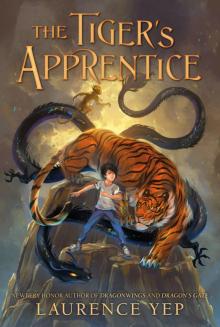 The Tiger's Apprentice
The Tiger's Apprentice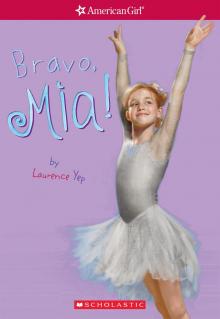 Bravo, Mia
Bravo, Mia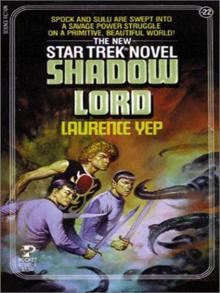 STAR TREK: TOS #22 - Shadow Lord
STAR TREK: TOS #22 - Shadow Lord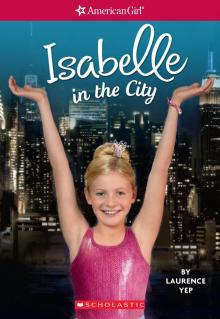 Isabelle in the City
Isabelle in the City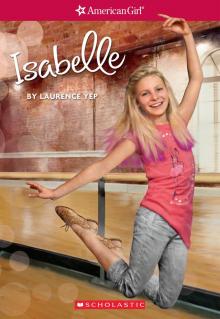 Isabelle
Isabelle To the Stars, Isabelle
To the Stars, Isabelle Designs by Isabelle
Designs by Isabelle A Dragon's Guide to the Care and Feeding of Humans
A Dragon's Guide to the Care and Feeding of Humans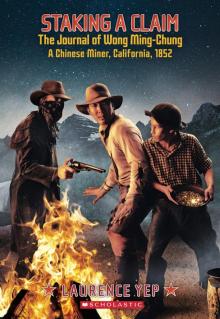 Staking a Claim
Staking a Claim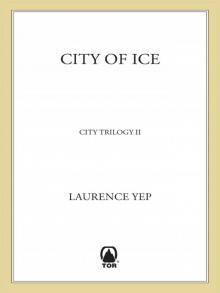 City of Ice
City of Ice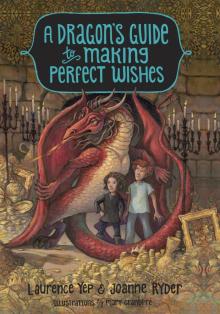 A Dragon's Guide to Making Perfect Wishes
A Dragon's Guide to Making Perfect Wishes City of Death
City of Death